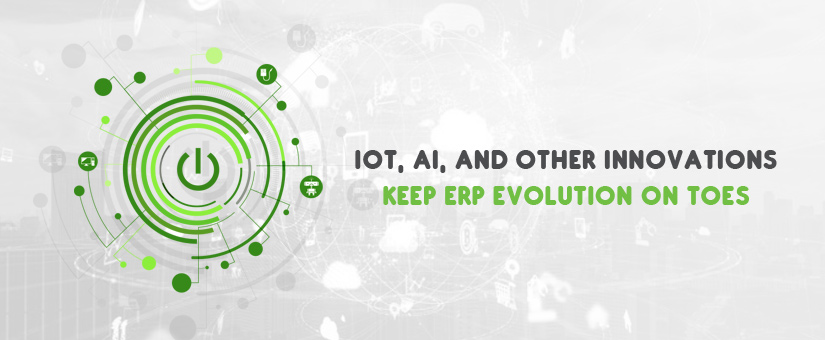Enterprise Resource Planning hasn’t really been at the forefront of the digital revolution even though ERP systems are critical to multiple business functions such as enterprise resource management, accounting, business intelligence, procurement, and production.
However, there is now, a major shift in that line of thinking. A 2014 report by Gartner defined something known as a post-modern ERP. In this post-modern version, the components of the ERP suite are more loosely connected and the component software is more likely to be from external, function-specific IT companies.
This has opened up the possibilities for unprecedented innovation in this sector. The onus is now on SaaS IT companies to tap into the latest technologies in order to sell their product as an ERP extension. So, let’s take a look at some of the cutting-edge tech that these companies are using to do this-
Blockchain
Blockchain is one of the buzzwords in the world of technology these days. While most of the focus in on cryptocurrency and Bitcoin, the potential for Blockchain for businesses is immense. Blockchain can help make ERPs more secure by encoding the data and ensuring that it can be shared widely without compromising critical information.
It is one of the most innovative developments happening in the field of network security. In fact, a recent study predicts a future where companies will be eligible for trade only when they are blockchain certified.
Predictive Analysis
One of the most disruptive innovations that is drastically changing ERPs is predictive analysis. While earlier the primary function of data was for looking back, predictive analytics are now enabling businesses to look forward through the prism of vast pools of data.
Many of the leading ERPs in the market are now being integrated with predictive analytics tools in order to better tap into their data and convert this knowledge into actionable insights.
Artificial Intelligence (AI)
Machine learning and AI are two of the most talked about technological trends in the world today and they have huge potential for ERPs. Maintaining such a massive system takes up a lot of time and manpower, which is where automation comes into the picture.
By teaching a machine how to recognize, segregate, and crunch data, the ERP can achieve faster data management while cutting down on the manpower required. This will eliminate repetitive manual processes, thus helping the business to shift their focus on more profitable activities.
Big Data on Cloud
Data is at the epicenter of most ERPs, but in traditional systems there were multiple inefficiencies in the process of data collection and storage. Most on-premises ERPs had limited storage space and were prone to inaccuracies due to manual data import and incompatibilities.
The rapid development of cloud technology has opened up brand new avenues for ERPs. Data storage has become more streamlined as cloud-based ERP solutions can easily be integrated with multiple systems. The technology industry is already experiencing a seismic shift to cloud with most IT industry giants working to shift their on-premise ERPs to cloud.
Internet of Things (IoT)
The growing number of connected devices in the world has made it possible for all resources to help improve the ERP. Personal devices like smart phones and smart watches are now being calibrated by many companies to collect useful data and feed it to the ERP.
This substantially improves the data collection process, completely sidestepping the earlier process where data was manually collected and passed through multiple levels of staff to finally make it to the ERP. It also ensures that the business can collect real-time data, thus giving it an unprecedented level of operational visibility.
These are just a few of the latest technologies that are aiding in the evolution of ERP. More developments are incoming as more and more IT companies delve into the business of developing ERP extensions. We are one of those companies, and our Online ERP Software aim to help your business tap into the latest technology that is being utilized to improve ERP.
